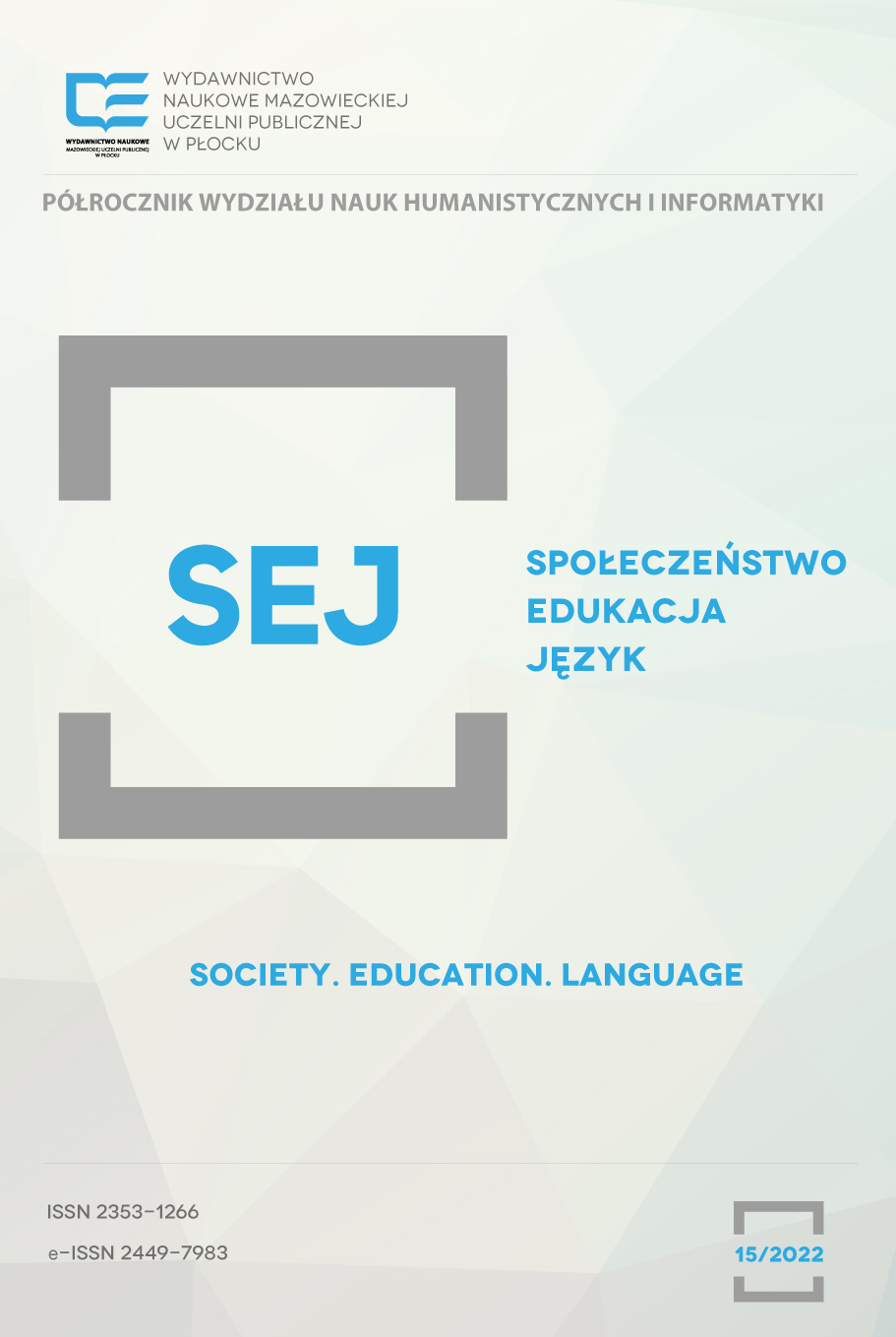SHAPING THE STUDENTS’ KEY COMPETENCES IN THE PRIMARY SCHOOL IN WĄPIELSK
DOI:
https://doi.org/10.19251/sej/2022.15(16)Keywords:
key competences, methods and forms of education, optimization of forms and teaching methodsAbstract
Key competences are a set of skills and competences that a person should have in order to be able to move freely and fully in everyday life, both private and professional. On the basis of these competences, the core curriculum is built and the methods and forms of shaping these competences are defined. Key competences are divided into eight groups, which contain in individual groups all the competences useful for a human being. Among them are language, digital, civic and entrepreneurial competences. For each competence, the methods, methods and forms of teaching are listed that help to transfer knowledge more freely, learn more efficiently, but also optimize this teaching in order to achieve the best results. Each competence contains a set of attributes specific to this group, it also includes tips and suggestions for optimizing the learning and teaching process. The key competences have been defined in a joint document of the European Council as recommendations and have been systematized therein, described in sufficient detail so that they can be used as an aid and a signpost. The above competences are updated and verified on an ongoing basis, taking into account progress and changes, both economic and social. All of this is aimed at the optimization and accessibility of teaching and learning.
References
Basińska A., 2017. Teoria w pigułce, Zestaw 8, Zeszyt 1. Warszawa: ORE.
Byram M., Teaching and Assesing Intercultural Comminicative Competence., Clevdon: Multilingual Matters.
Gadomska A., Morusiewicz R., Krajka J., 2012. Nauczanie języka obcego a specy-ficzne potrzeby uczących się. O kompetencjach, motywowaniu i strategiach. Lublin: Towarzystwo Naukowe KUL/Katolicki Uniwersytet Lubelski Jana Pawła II.
Goźlińska E., 1997. Słowniczek nowych terminów w praktyce szkolnej. Warszawa: CODN.
https://www.eurodesk.pl/granty/ponadnarodowa-mobilnosc-uczniow, Ponadnarodo-wa mobilność uczniów (PO WER) (dostęp: 04.02.2022r.).
https://www.paroli.pl/metoda-gramatyczno-tlumaczeniowa/,Metoda gramatyczno – tłumaczeniowa (dostęp: 16.02.2022r.).
https://www.speak-up.pl/aktualnosci/najpopularniejsze-metody-nauki-jezyka-angielskiego, Najpopularniejsze metody nauki języka angielskiego (dostęp: 08.02.2022r.).
www.angielski.epolen.eu/?metoda-naturalna, Metoda naturalna (dostęp: 10.02.2022r.).
Krajka J., 2010. Cele zastosowania technologii informacyjnej i komunikacyjnej w procesie uczenia się języka obcego. Warszawa: Komorowska H.(red.), Nauka języka obcego w perspektywie ucznia.
Krawiec M, Gendera K., Frankowska M., Metoda projektu i propozycja jej zastoso-wania w edukacji językowej w szkole podstawowej. https://jows.pl/artykuly/metoda-projektu-i-propozycja-jej-zastosowania-w-edukacji-jezykowej-w-szkole-podstawowej (dostęp: 24.02.2022r.)
Kwiatkowski S.M., Kompetencje przyszłości, Seria Naukowa FRSE. Tom III, 2018. Warszawa: Fundacja Rozwoju Edukacji.
Prensky M., Digital natives, digital immigrants., On The Horizon 9(5)
Szpotowicz M., 2009. Nowa podstawa programowa dla języka obcego nowożytnego w klasach I-III., Biblioteka Cyfrowa Ośrodka Rozwoju Edukacji CODN. Dostęp: 09.12.2021. http://www.bc.codn.edu.pl/dlibra/docmetadata?id=135&from=pubindex&dirids=18 (dostęp: 24.02.2022r.).
Zalecenia Rady z dnia 22 maja 2018 r w sprawie kompetencji kluczowych w procesie uczenia się przez całe życie (Tekst mający znaczenie dla EOG) (2018/C 189/01).
